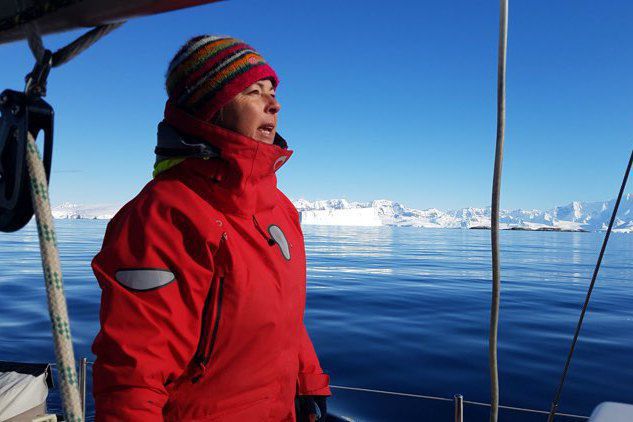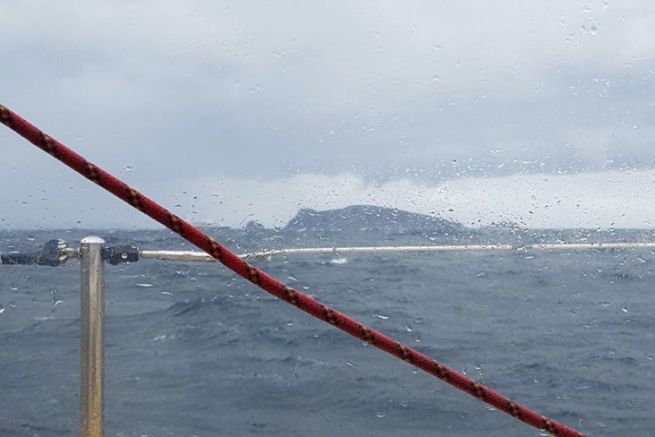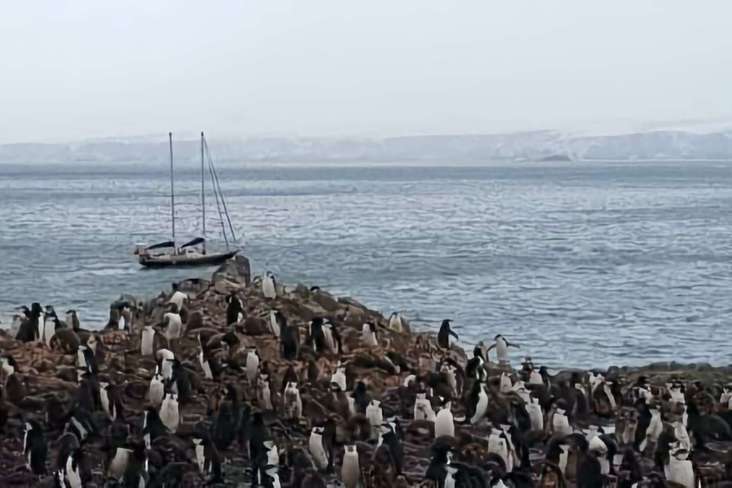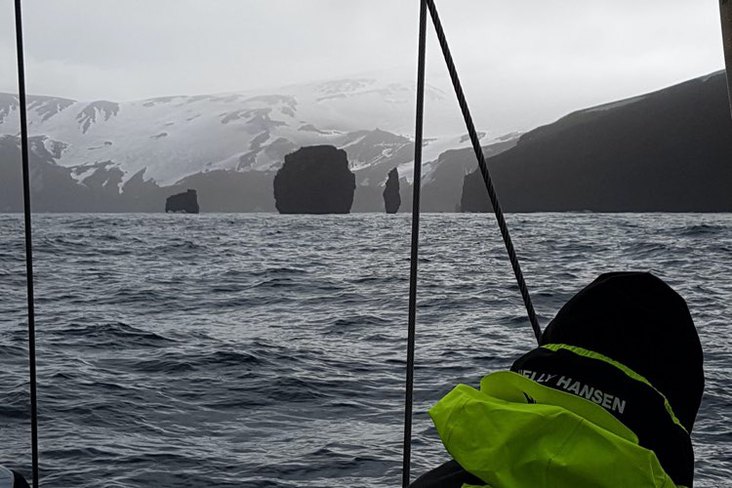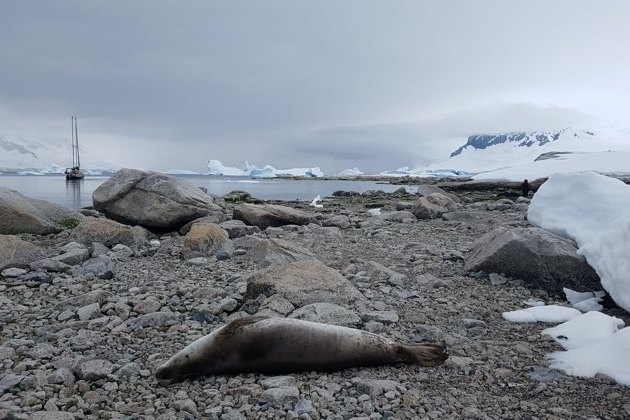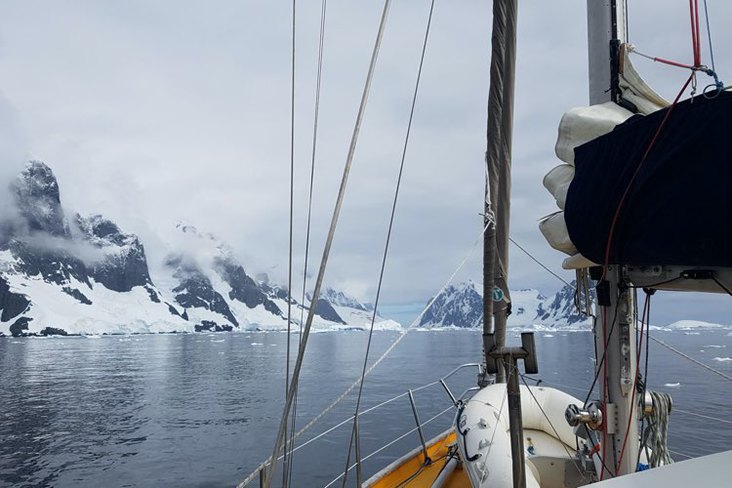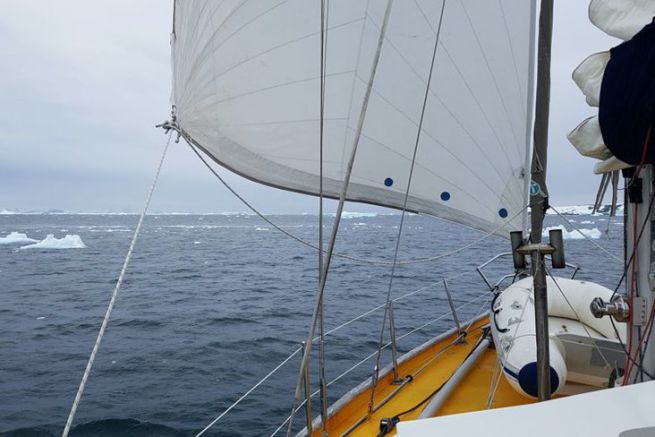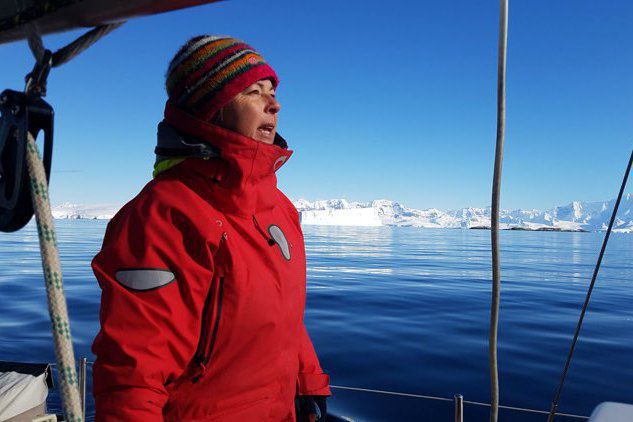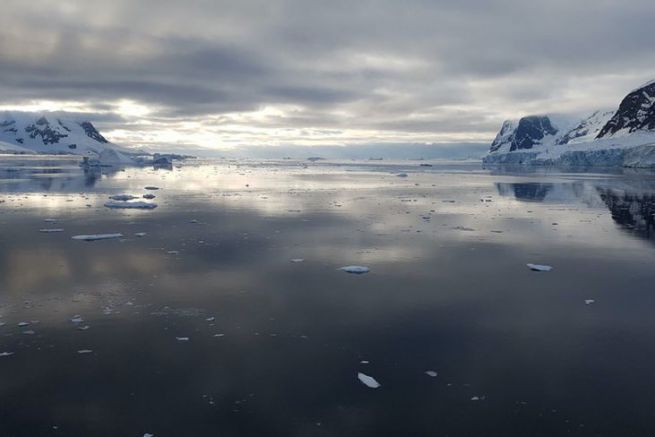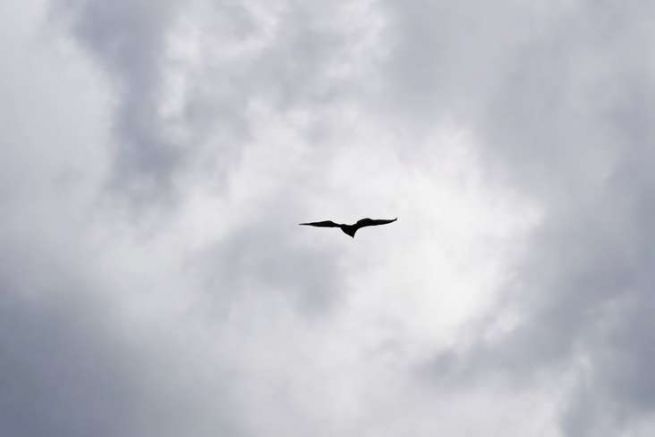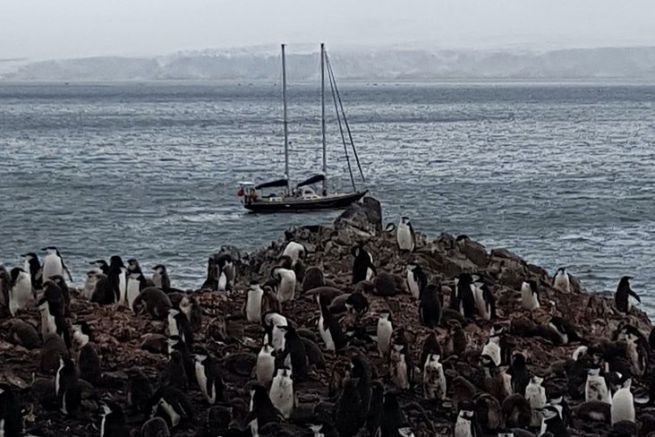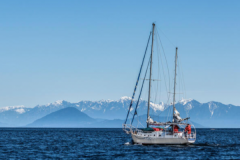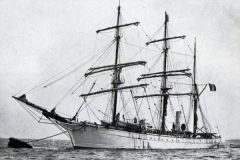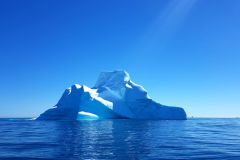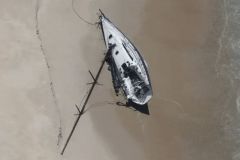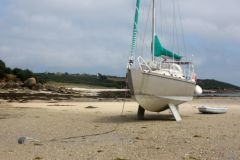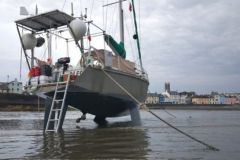Dominique continues his account of his trip to Antarctica. After reaching the southernmost point It's time to head north before the end of the summer.
The morale of the crew as it rises
The next day, equipped with our new RACOR filter and an extra bottle of gas generously donated by Brice, the skipper of Podorange, the morale of the crew is high, boosted by weather conditions like only Antarctica has to offer: a blue sky, a gentle sunshine which allows us to move around in our T-shirts on deck, a sea like a lake from which enormous ice sentinels are watching us from all around. With its new RACOR filter, the engine is running. And to top it all off, we've got enough gas again to rethink putting the small dishes into the big ones.
We are heading for the Melchiors Archipelago, a well-protected site where the boats preparing to cross the Drake are waiting for favourable weather conditions. We anchor for the night to leeward of the "False and Pear" islands: absolute calm and a depth of 12 m ensure a perfectly serene night.
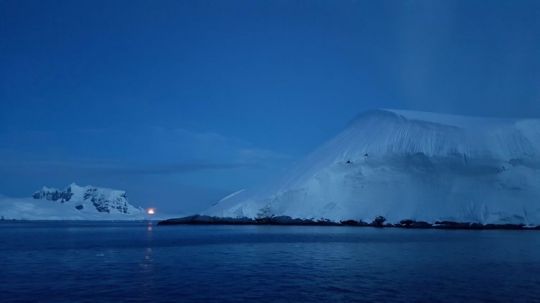
We still have about 30 miles to cover the next day to reach the Melchiors. Once again, the weather is exceptionally calm and the show is fairy tale. We're surrounded by icebergs as gigantic as bars of buildings, motionless in the total absence of breeze on the indigo sea, reflecting the sun which darts across the azure sky in a thousand lights. The spectacle is grandiose and the surrounding peace supernatural.
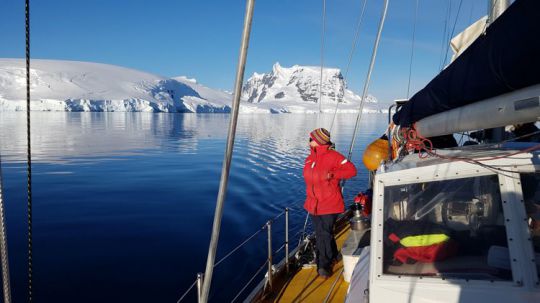
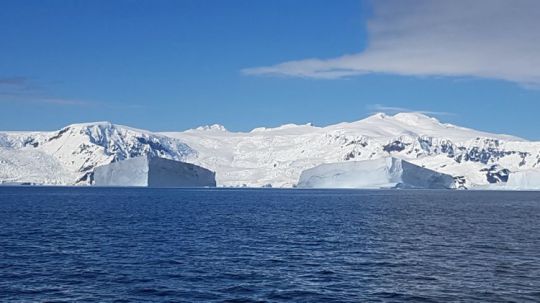
Very imprecise cartography
The captain's at the helm, one eye on the navigational tablet. In this part of the world, most charts are inaccurate. Much more valuable are the sketches that have been going from ship to ship for decades. These sketches are usually quite accurate and detailed, and generations of Antarctic navigators have added their successive touches to them, in the form of notes or reported details.
One of these sketches mentions a very dangerous underwater rock that will only result in a few wrinkles on the surface if there is a small swell. But in this absolutely calm weather, nothing disturbs the surface of the water. Carole advises the captain to slow down because there is this rock somewhere around us. But according to him, the rock is behind us and he maintains his course at 4 knots with the engine. He doesn't have time to react to the sudden rise of the depth sounder, which goes from no reading (too deep) to a terrifying countdown.
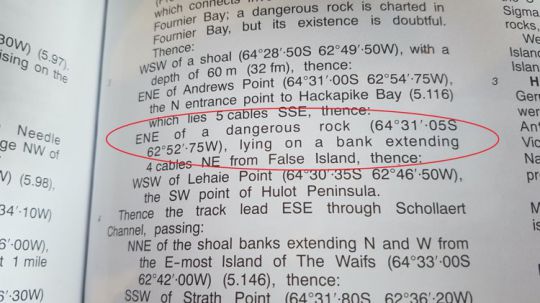
Severe grounding and engine out of order
Too late... Our sailboat stops dead on the rock we finally found, in spite of ourselves! The impact is violent, shaking the whole rigging. The schooner climbs on the rock, snaps and slides sideways into deep water in a crash of battered metal.
Immediate jerk-off on board. We're raising all floors to identify a possible waterway. Nothing. "You see, there's nothing to worry about," reassures our captain, "my boat is strong." But 15 minutes later, a big white smoke comes out of the exhaust, the engine hiccups violently and stops. And since, according to Murphy's Law, a problem never happens by itself, a scream comes from the saloon: a geyser of diesel comes out of the tank vent.
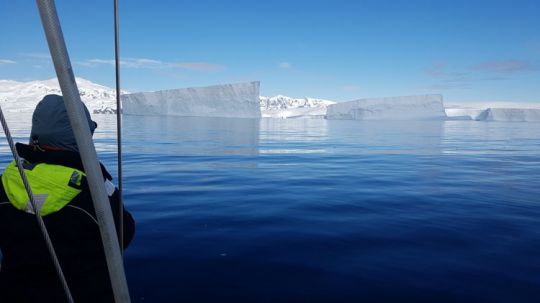
The tank in the keel is pierced
Our boat is indeed not short of surprises. The fuel tank vent is installed inside the boat and under the waterline! And as the diesel tank is located in the keel, we instantly understand what happened. We have perforated the keel and the water pressure is flushing the diesel through the vent. A chain was set up very quickly. Using the empty cans stored on deck, we retrieve the diesel oil to prevent it from contaminating the entire interior. We thus recover 260 litres of diesel oil (contaminated by sea water), soon followed by sea water itself, once all the diesel oil has been flushed out. At the rate at which the water is gushing out (about 20 litres per minute), we have to do something quickly to stop this ingress of water, otherwise we will sink in a few hours. A pinoche will do the trick to plug the vent.
No wind, no engine
We are now adrift in this fairy-tale setting. The captain decided to put the spinnaker on to reach the Argentinean base at the entrance to the Melchiors Archipelago. Contacted repeatedly on the VHF, the latter does not respond, but we can put that down to the extremely limited range of our VHF. We pass a science vessel going in the opposite direction, but our captain refuses to inform her of our delicate situation.
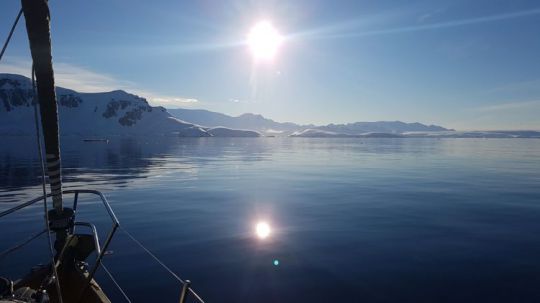
In a dangerous situation
The wind is extremely light (3 knots) and even the spinnaker doesn't want to inflate, despite the racing efforts developed all afternoon by our captain. Only the tidal current brings us to 0.5 knots towards the funnel of the entrance channel to the Melchiors. To the right, a vertical cliff of ice, to the left sharp rocks. The scene on board is surreal. As we drift away, the captain struggles with the spinnaker that refuses to inflate, his wife sorts through his photos on her computer, the crewman plays solitaire on his tablet and Sara watches Carole and I, wondering if something will eventually happen. Meanwhile, the current makes us drift, gradually bringing us closer to the coast where we risk running aground.
Last chance intervention on the engine
Something must be done, and quickly. If the 9 hp outboard motor had been in working order, it would have been possible to move around with the dinghy given the light wind and sea. With the electric outboard, there's no need to even think about it. All that's left to do is to try to restart the engine, which has sucked in seawater. I quickly dismantle the previously installed electric booster pump and cut off the fuel system without restraint, which has been rendered undetachable by the oxidised clamps, which are nothing more than rust heaps.
A potato to stop the waterway..
On the return circuit, a seawater geyser appears as soon as I cut the circuit. I push a potato deep into the copper pipe of the return circuit, and the geyser is under control. With the help of flexible hose and the electric pump, I make an independent supply circuit that draws the diesel oil from one of the last 5 jerry cans of clean fuel that we have kept stored on deck. Change of filters (I put back the "old" RACOR 30 microns, because the "new" 10 microns took the sea water), purge of the circuit, our last reserves of WD-40 in the air filter and a good dose of prayers to Neptune and the engine starts..
Good news, because when we approach the Argentinian base, we see that it is completely closed and that the anchorage targeted by the captain is obscured by a large iceberg. We circumnavigate the whole archipelago to reach the very safe anchorage to the east of the archipelago. We are surrounded by ice cliffs, in a narrow pocket, moored on 4 rocks. We are very protected.
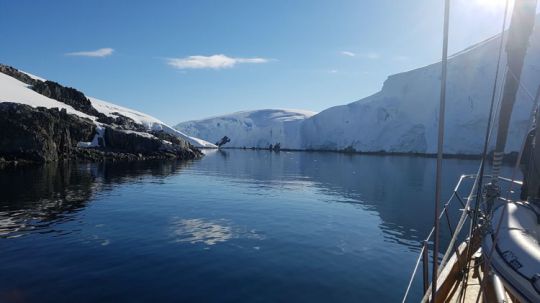
To be continued..
